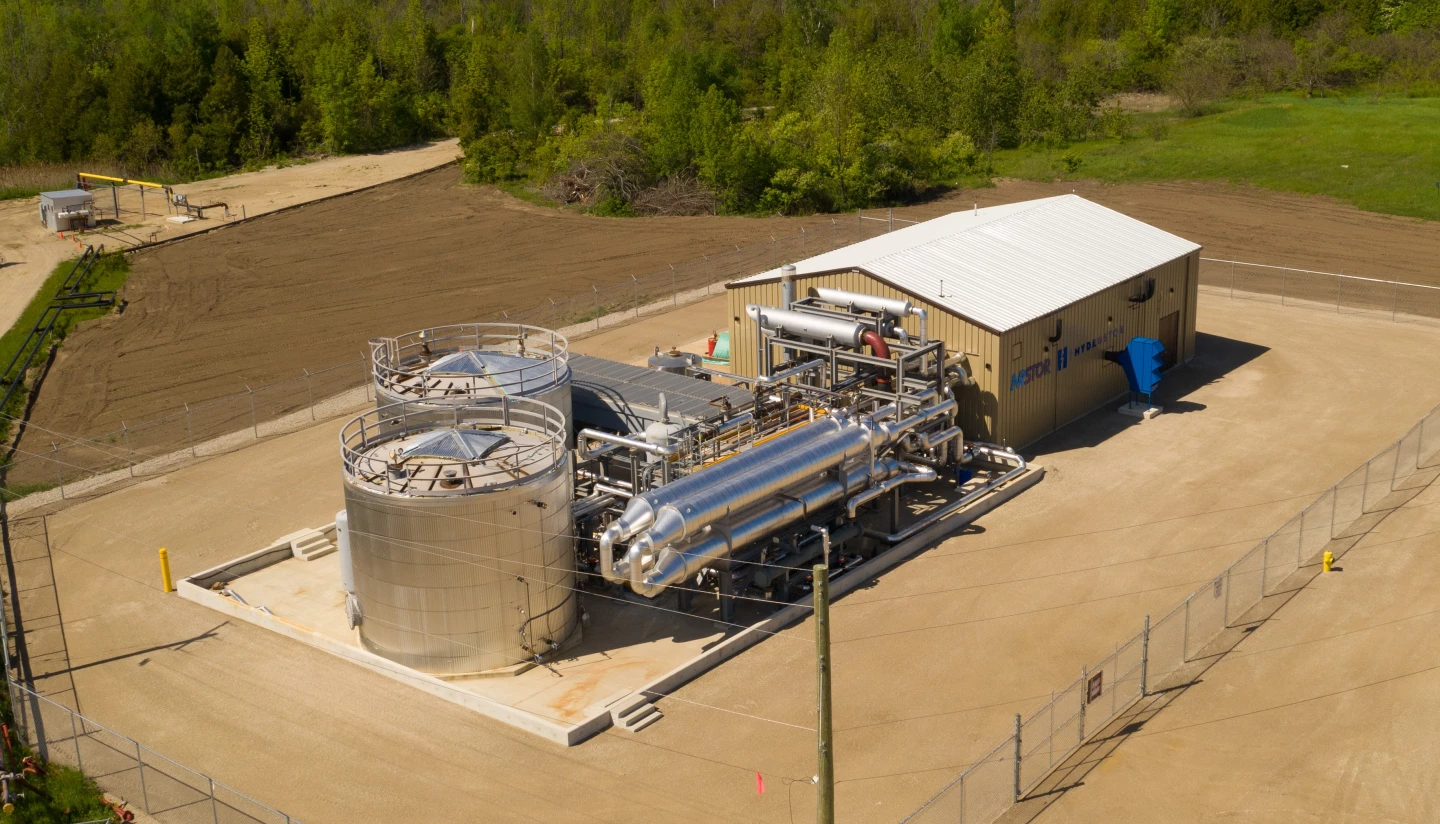California is set to be home to two new compressed-air energy storage facilities – each claiming the crown for the world’s largest non-hydro energy storage system. Developed by Hydrostor, the facilities will have an output of 500 MW and be capable of storing 4 GWh of energy.
As the world shifts towards renewable energy, grid-scale storage is becoming ever more crucial. Getting carbon emissions to net-zero will require a patchwork of technologies to smooth out unpredictable and inconvenient generation curves, with pumped hydro, huge lithium-ion batteries, tanks full of molten salt or silicon, thermal bricks, or heavy blocks stacked up in towers or suspended in mineshafts all in the mix.
Pumped hydro accounts for around 95 percent of the world's grid energy storage and gigwatt-capacity plants have been in operation since the 1980s. The problem is that you need a specific type of location and a staggering amount of concrete to build a pumped hydro plant, which works against the goal of reaching net zero. Rotting vegetation trapped in dams also contributes to greenhouse gas emissions. Meanwhile, the biggest mega-batteries built so far are only in the 200 MW/MWh range, though installations bigger than 1 GW are planned.
Another technology that's been in use for decades is compressed air energy storage (CAES), which can store energy on a grid scale and is billed as having the reliability of pumped hydro, without the same constraints on where you can build it. The McIntosh Plant that’s been running in Alabama since 1991 is still one of the largest energy storage plants in the world, at 110 MW and 2.86 GWh.
The new Hydrostor facilities are set to snatch the title though, providing almost twice the storage capacity. They will run on an updated version of the technology called advanced compressed air energy storage (A-CAES).
A-CAES uses surplus electricity from the grid or renewable sources to run an air compressor. The compressed air is then stored in a big underground tank until energy is needed, at which point it’s released through a turbine to generate electricity that’s fed back into the grid.
Rather than vent the heat generated as the air is compressed, Hydrostor’s system captures that heat and stores it in a separate thermal storage tank, then uses it to reheat the air as it's fed in to the turbine stage, which increases the efficiency of the system. This could prove to be key; compressed air storage systems have typically offered round-trip efficiencies between 40-52 percent, and Quartz is reporting more like 60 percent for this system.
Hydrostor’s A-CAES also makes use of a closed-loop reservoir to maintain the system at a constant pressure during operation. The storage cavern is partially filled with water and as the compressed air is piped in, the water is forced into a separate compensation reservoir. Later, when the air is needed, the water is pumped back into the air storage cavern, pushing the air out towards the turbine.

A European facility called the RICAS 2020 Project was due to work on a similar system, storing the heat for later use. But the project has gone quiet since 2018, and missed its 2020 target. Another similar design, the CRYOBattery in the UK, stores the compressed air as a liquid in a supercooled chamber, rapidly heating it up to convert it back into a gas when energy is needed.
Hydrostor says the two A-CAES systems will store up to 10 GWh of energy, providing between eight and 12 hours of energy over a full discharge at close to its maximum rate. This kind of medium-duration energy storage is crucial to make the switch to renewable energy, and the facilities should have an operating life of more than 50 years.
That excellent longevity could have a significant effect on the cost equation compared to lithium-based battery plants that are being planned and installed at increasing rates around the world. Lithium batteries will be better in terms of immediate response to demand, and their round-trip efficiency is excellent at around 90 percent, but they have a definite cycle life even when intelligently managed, and their cells will need regular replacement.
Hydrostor's plants will cost roughly the same per kWh of storage as either natural gas plants or battery installations, according to Quartz. But they scale much cheaper than batteries as capacities rise, and while there will be more maintenance on compressors than batteries, one imagines the cost to replace battery cells will be higher over the long run. High enough to justify the energy losses? The market will determine the answer in short order.
The first plant is set to be built in Rosamond, California, and if all goes to plan it should be up and running in 2026. The second plant will also be built in California, but the exact location has yet to be announced.
Here's a look at Hydrostor's tech:





